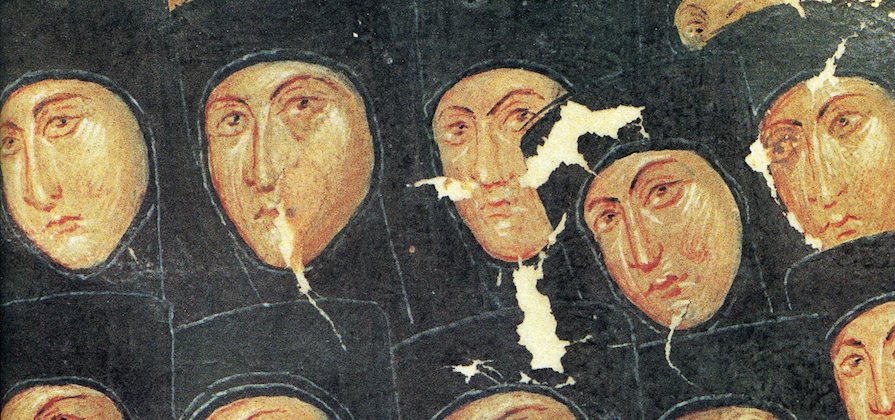Participants
Christopher Hobbs (Royal Holloway, University of London)
Moderator
Andrea Mattiello (University of Birmingham)
Aristocratic Costumes in Funerary Portraits in Mystras: Syncretic Cultural Trends in the Late Palaiologan Despotate of Morea
The Byzantine Morea was the centre of intense interactions between Franks, Byzantines, Venetians, Slavs and Ottomans. These resulted in a syncretic cultural environment affecting the visual arts and material culture of Mystras. The response of elite families to this cultural environment is particularly visible in the frescoed funerary portraits of the churches of Mystras, depicting aristocratic costumes coherent with late Byzantine imperial standards while also featuring elements of exogenous fashion traditions. This paper analyses and contextualizes these costumes keeping in mind the cultural syncretism of Mystras, which embodied the aspirations of Palaiologan dynastic renewal, and the multilateral interests of the many polities bordering Morea by sea and land.
Brian McLaughlin (Royal Holloway, University of London)
Organizer and presenter
The Common Good? Philanthropy, Piety and Politics in the Palaiologan Era
The restoration of Byzantine rule in Constantinople was accompanied by a self-conscious attempt to restore Byzantine traditions, including that of philanthropy. However the establishment of significant charitable institutions soon declined and by the fourteenth century monastic foundations often made little or no provision for public charity. This reflected a decline in available resources but seemingly also the increasing introversion of Byzantine elites in an era of rising social tensions. This paper examines literary evidence which suggests that the culture of charitable giving had perhaps not disappeared but was increasingly expressed in different forms as a response to increasing external pressures on Palaiologan society.
Petra Melichar (Czech Academy of Sciences)
Preventing the Ruin: the Role of Palaiologan Empresses and Noble Women
At first sight, Palaiologan Byzantium, replete with wars, attacks and military expeditions, was something of a ‘male’ world. Nevertheless we know of imperial or noble women who worked to stem the decline of their society. They carried out negotiations, governed cities and reconciled warring relatives. Others were founders and donors of monasteries, which offered help and home to fugitives from Asia Minor. For example, Theodora Synadene Palaiologina founded a nunnery of Sure Hope, granting access to poor women. Finally, some became patrons of arts and literature, promoting the cultural bloom of late Byzantium. While the literary activities of Theodora Raoulaina seem unique, scholars consider Empress Theodora Palaiologina responsible for the de luxe manuscripts known as the Palaiologina group.
